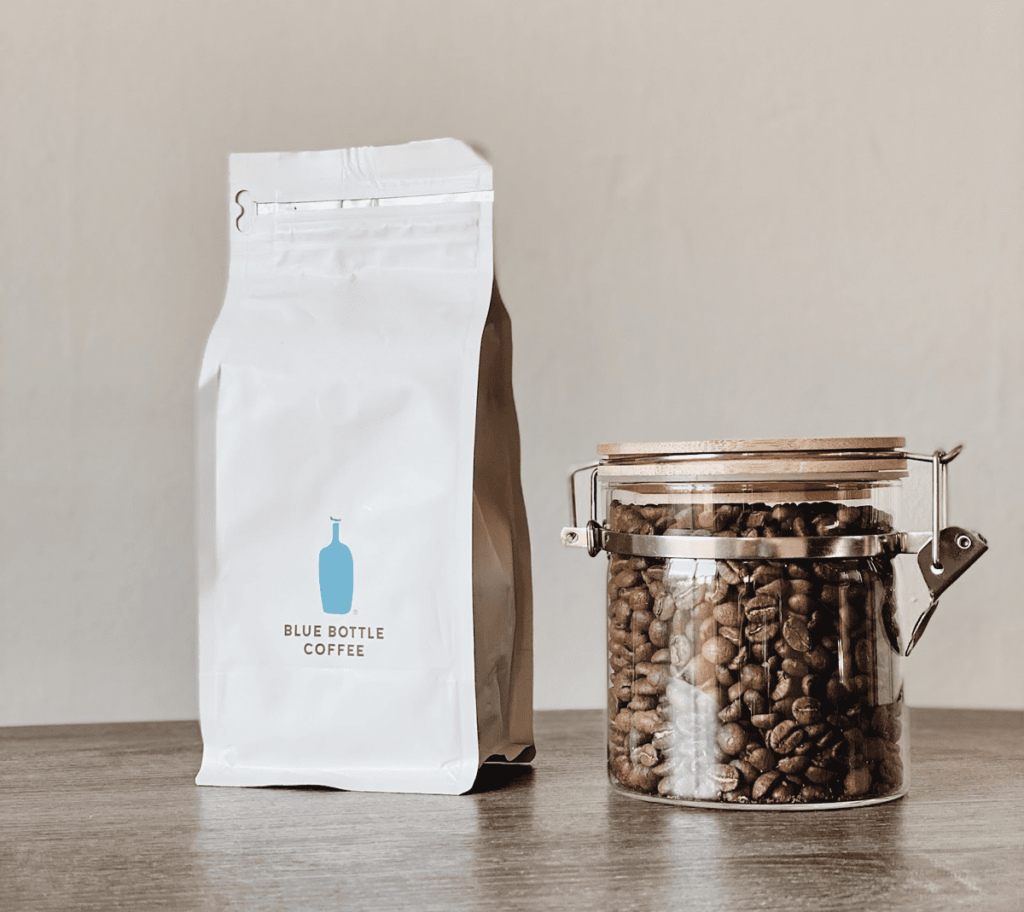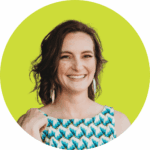Are you considering starting a membership site but don’t know where to begin? Don’t worry; you’re not alone, and I can help.
Many entrepreneurs and business coaches are diving into the world of online memberships and subscriptions, and it’s easy to see why.
A membership site can provide a steady stream of income and build a loyal community of customers who are eager to learn and grow with your business.
But before you dive in headfirst, you need to know the difference between a subscription and membership model.
While both can offer recurring revenue and a community of engaged customers, they have different pricing structures, accessibility, and commitment levels.
So, what’s the difference?
A subscription model typically involves providing access to digital content or services for a monthly or yearly fee.
Think Netflix, Spotify, or Adobe Creative Cloud.
On the other hand, a membership model often provides access to exclusive content, resources, and community support for a one-time or recurring fee.
Think online courses, coaching programs, and private communities.
Both models have their own unique advantages and disadvantages, and choosing the right one depends on your business goals and target audience.
To help you make the right decision, we’ll dive deeper into the pros and cons of each model, show you how to choose the best approach for your business, and help you learn how you can set up subscriptions and memberships with AccessAlly!
What is a membership model?
A membership model is a type of online business where members pay a recurring fee for access to exclusive content, products, services, or other benefits.
It’s a bit like joining a club, but instead of paying an annual membership fee, members pay a monthly, yearly, or one-time fee for access to a range of perks.


Membership sites are often used in markets such as education, health, wellness, and lifestyle, where customers are looking for ongoing support, guidance, and resources.
For example, a business coach might offer a membership site that provides access to coaching sessions, mastermind groups, and exclusive content to help members grow their businesses.
Similarly, a fitness instructor might offer a membership site that provides access to workout videos, meal plans, and community support to help members achieve their health goals.
Some of the key benefits of a membership business model are:
- It provides a recurring revenue stream for your business.
Unlike a traditional one-time sale, where you make a sale and then have to go out and find new customers, a membership model allows you to build a community of loyal customers who will continue to pay for access to your products and services. - It allows you to create a sense of exclusivity and community around your brand.
By offering exclusive content, resources, and support, you can create a tribe of like-minded individuals who share a common interest or goal. This can lead to increased engagement, loyalty, and advocacy for your brand.
There are many different types of membership site models, each with its own unique benefits and challenges. Some popular models include:
- Content-based membership sites: Include access to exclusive content, such as articles, videos, or podcasts, for a recurring fee.
- Product-based membership sites: Offer a range of products, such as courses, ebooks, or software, for a recurring fee.
- Community-based membership sites: Developed around the model of a private community, such as a forum or Facebook group, for a recurring fee.
- Service-based membership sites: Offer a variety of services, such as coaching or consulting, for a recurring fee.
- Hybrid membership sites: Often a combination of different types of content, products, services, and community support for a recurring fee.
By offering exclusive benefits, personalized experiences, and a sense of community, membership sites can provide real value to their customers and differentiate themselves from their competitors.
While there may be challenges to building and maintaining a successful membership site, the potential benefits can be significant.
Carefully consider your target audience, value proposition, and business goals, to create a membership site that meets the unique needs of your customers and helps your business thrive over a period of time.
What is a subscription business model?
The subscription business model is where customers pay a recurring fee for access to a product or service.
Subscription companies usually charge this fee on a monthly or annual basis, and the customer can use the product or service for as long as they continue to pay the fee.
One of the most popular examples of a subscription business model is software-as-a-service (SaaS).
Take a look at some of the industries implementing various types of subscription models :
Information technology
Companies like Adobe and Microsoft offer cloud-based software subscriptions, which customers can access from anywhere with an internet connection.
This eliminates the need for expensive hardware and software updates, making it an attractive option for businesses and individuals alike.
Entertainment
Streaming services like Netflix and Spotify have also taken advantage of the subscription model.
By offering unlimited access to movies, TV shows, and music for a monthly fee, these companies have disrupted traditional cable and music industries.
Customers no longer have to worry about purchasing individual songs or movies, and can instead enjoy a vast library of content for a fixed price.
Media & communication
Magazine subscriptions are another example of the subscription model.
Instead of purchasing individual issues at a newsstand, customers can pay a yearly fee to have the magazine delivered to their door.
This model has allowed publishers to reach a wider audience and generate steady, predictable revenue.
Food production & delivery
Companies like Blue Bottle and Trade Coffee offer monthly subscription options for fresh, high-quality coffee beans delivered straight to customers’ homes.


This not only provides convenience for customers, but also helps ensure a steady stream of revenue for the coffee companies.
In many sectors, the subscription business model is transforming the way we consume products and services.
By offering a recurring fee for access to a product or service, new businesses can generate predictable monthly recurring revenue and retain customers.
With the rise of digital technology, we can expect to see more and more service providers tap into the subscription economy in the future.
This brings us to the question, which of these works better? To understand that, let’s take a look at some of the pros and cons of each.
Pros & cons of subscription and membership-based models
There are several advantages and disadvantages of membership and subscription-based business models.
While there is some overlap between the two, each model has its unique set of benefits and drawbacks. Let’s take a closer look at the pros and cons of both models.
Common advantages of membership & subscription models
Both membership and subscription-based business models have their unique advantages. Here is an overview of how they compare.
Increased revenue opportunities
Both models offer increased revenue opportunities.
By charging customers a recurring subscription fee, businesses can enjoy a more predictable cash flow, as well as better revenue forecasting.
For example, companies like Dollar Shave Club and Blue Apron have leveraged the subscription model to great success, offering customers a convenient and cost-effective way to receive products on a regular basis.
Improved customer loyalty
Members who pay to join a community or receive special benefits are more likely to remain loyal, as they feel invested in the brand and the experience it offers.
This can lead to increased customer retention rates and lower acquisition costs.
Consider how Amazon Prime has over 200 million members worldwide, thanks to its extensive benefits package, including free shipping, exclusive deals, and access to streaming services.
Increased customer engagement
By offering exclusive access to content or services, businesses can create a sense of exclusivity and foster a deeper connection with their audience.
For example, fitness studio ClassPass offers a membership program that provides access to a wide variety of workouts and classes, encouraging members to try new products and activities and stay engaged.
Having said that, there are some unique advantages of each model as well.
Membership models can offer a better understanding of customer needs, as businesses can track member behavior and tailor offerings accordingly.
This allows them to create a more personalized experience and better meet the needs of their audience.
Subscription models are often easier for customers, as they don’t need to think about reordering every month. This convenience can lead to higher customer satisfaction and retention rates.
As you can see, both membership and subscription-based business models have their advantages.
The best way to determine which can work for your business is to analyze your specific goals and target audience and pick the one that aligns with your growth values.
Common drawbacks of membership & subscription models
While both membership and subscription pricing models offer many benefits, there are also some drawbacks to consider.
These include:
High acquisition costs
This is particularly true for businesses that charge high ticket prices or an annual fee.
To showcase the value of their offering and convince customers to pay for the benefits they provide, these businesses may need to invest heavily in marketing and advertising, which can be a significant expense.
Customer resistance to payment
Some customers may be resistant to the idea of paying for benefits that were once offered for free, or they may not be accustomed to paying for a product or service on a recurring basis.
This resistance can make it challenging to attract and retain customers, especially if competitors offer similar benefits for free or at a lower cost.
Customer churn
If customers cancel their memberships or subscription products, businesses can quickly lose a significant source of recurring revenue, which can have a negative impact on their revenue and growth.
However, it’s worth noting that churn rates for subscription box businesses have been decreasing in recent years, with many companies implementing strategies to improve customer retention.
Complex management principles
Managing a membership or subscription model can be complex, requiring businesses to handle recurring billing, payments, and customer management.
This can be challenging for businesses that don’t have the right systems and processes in place, potentially leading to payment processing errors, customer frustration, and lost revenue.
Despite these challenges, many businesses have successfully implemented membership and subscription models, leveraging their many benefits while mitigating the associated risks.
With the right strategies and tools in place, businesses can overcome these challenges and build a thriving membership or subscription-based business.
Key differences between subscription and membership models
Subscription and membership models are two distinct approaches that businesses can use to monetize their products and services.
While they share some similarities, they also have key differences that make them unique.
Let’s take a look at these:
| Feature | Membership | Subscription |
| Pricing | Membership models typically charge a one-time fee for access to a set of benefits and services. | Subscription models usually charge a recurring fee, which customers pay monthly or annually for access to a product or service. |
| Accessibility | Membership models often offer access to a broader range of benefits and services, including exclusive experiences, discounts, and other perks. | Subscription models offer customers unlimited access to a product or service for as long as they pay the fee. |
| Customer committment | Membership models may require a long-term commitment, but they may also offer the option of a one-time fee for access to benefits. | Subscriptions typically involve a long-term commitment as customers are required to pay a recurring fee for access to the offering. |
| Customer experience | Membership models place a greater emphasis on creating a sense of community and offering exclusive benefits and experiences. | Subscription models primarily focus on providing customers with access to core product or service functionality. |
| Revenue stream | Membership models may generate a mix of recurring and one-time revenue. | Subscription models generate a predictable and stable stream of recurring revenue. |
In addition, membership models often offer additional services and features that subscription models do not.
Businesses must consider their product or service offering and customer needs to determine which model is the best fit for their business.
Key considerations for choosing a model
When deciding between a subscription box and membership model for your business, there are several factors to consider. These include:
Target audience
It’s important to understand your target audience and their preferences, needs, and purchasing habits.
For example, if your target audience values benefits and experiences in addition to access, a membership model may be more appropriate.
If your target audience is primarily interested in access to a product or service, a subscription model may offer more profitability.
Business goals
Consider your business goals and what type of revenue stream you want to generate.
If your goal is to generate a stable and recurring stream of revenue, a subscription revenue model may be the better choice.
If you want to focus on generating one-time revenue or selling additional products and services, a membership model may be more appropriate.
Industry
The industry your business operates in can impact which option is best.
Subscription services are common in the software and media industries, while membership models are more common in the fitness and education industries.
Think of how a gym may offer a membership model that includes access to fitness classes, personal training, and other benefits.
Customer lifetime value
Consider the value that each customer will bring your business over the long term.
This will help you determine the right pricing strategy and commitment level for each customer relationship, which will impact your choice between the models.
For instance, if your target audience is likely to make repeat purchases or renew their membership over time, a membership model may be more appropriate.
Market research
It’s important to conduct market research to understand which model is most likely to be successful for your specific business and target audience.
This may involve surveying customers, analyzing market trends and competitors, and conducting focus groups or user testing.
Cost structure
Consider the costs associated with each model, including customer acquisition costs, retention costs, and overhead expenses.
This will help you determine which model is more financially viable for your business.
Scalability
Consider the scalability of each model and how easy it will be to expand your customer base and revenue stream over time.
For example, if your business is primarily focused on digital products or services, a subscription model may be more scalable than a membership model that requires physical locations or resources.
By considering these factors, you can make an informed decision about which business model is right for your specific business and target audience.
Membership models offer more opportunities for growth and innovation, as you can create add-ons and expand the service as you grow, whereas subscription programs are more rigid.
The ultimate goal is to create a model that provides value for customers and generates stable and recurring revenue.
Conducting thorough market research and analyzing customer data can help you determine which model is most likely to be successful for your specific business and target audience.
Tools to support your membership or subscription business model
As businesses continue to shift towards the membership and subscription business models, it’s essential to have the right tools in place to manage them effectively.
AccessAlly is an all-in-one WordPress plugin that provides everything you need to build and manage successful membership and subscription sites.


Some of the key advantages of using AccessAlly are:
Ability to handle both membership and subscription models with ease
With tag-based permission management, you can control access to your content and services, and members can easily upgrade or downgrade their plans as needed.
The platform also allows for drip-feed content, so you can schedule the release of new content over time to keep your members engaged.
Seamless integration with your CRM
AccessAlly integrates seamlessly with your chosen CRM system, enabling you to manage your customer interactions seamlessly.
It automates subscription management with CRM automation, simplifying the process and saving you time.
Plus, the platform provides prorated recurring subscription plans, which can automatically adjust billing based on plan changes or cancellations.
AccessAlly also works without an external CRM system if that is your preference, providing flexibility regardless of your setup.
Robust eCommerce features
AccessAlly simplifies the process of selling your membership or subscription programs with its root-level eCommerce features.
The plugin offers conversion-focused order forms, recurring payments with Stripe and PayPal, trial offers, and 1-click upsells and order bumps.
Additionally, the plugin provides affiliate tracking, abandoned cart follow-up, and cross-selling dashboards.
AccessAlly supports multiple currencies and tax tracking, enabling businesses to scale globally.
It also offers bulk course enrollment, making it easy to onboard new members or subscribers in large numbers.
Businesses using AccessAlly have seen significant growth in their memberships and subscriptions, with a 45% increase in new members and a 30% increase in member retention.
The plugin is scalable, making it an excellent choice for businesses looking to build, grow, and sustainably manage their membership or subscription sites.
Set up your memberships and subscriptions with AccessAlly
Choosing between a membership and subscription model requires a thorough understanding of your target audience, industry, business goals, and customer lifetime value.
While subscription models offer a stable and recurring revenue stream, membership models provide opportunities to grow and innovate by creating add-ons and expanding services as your business grows.
However, regardless of the model you choose, managing your membership or subscription program requires the right tools.
AccessAlly is an all-in-one WordPress plugin that simplifies managing membership and subscription sites.
Its tag-based permission management, drip feed content, and eCommerce features make selling and managing your programs easy, scalable, and sustainable.
Whether you’re a small business owner or a growing enterprise, AccessAlly can be the perfect tool to create and manage your membership and subscription-based WordPress websites.
With a strong focus on customer experience, ease of use, and scalable growth, AccessAlly is an essential tool for anyone running a membership or subscription-based business.
So why wait? Sign up for AccessAlly today and take the first step towards building a successful membership or subscription-based business!




